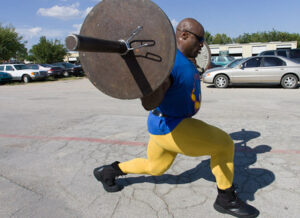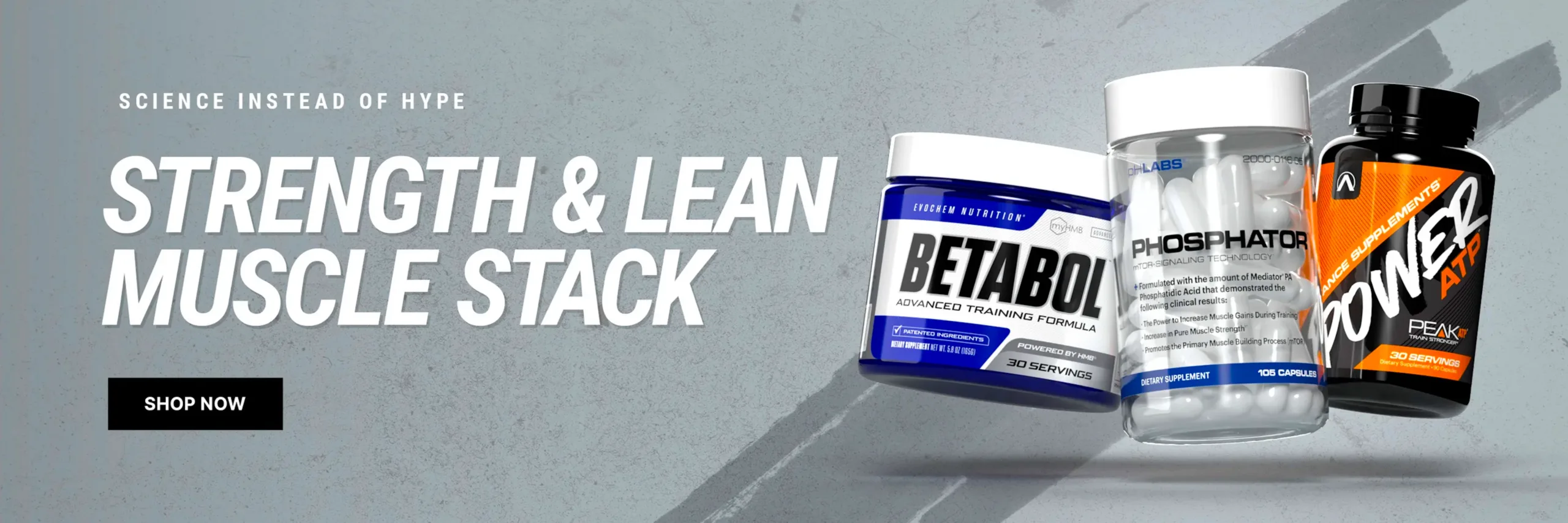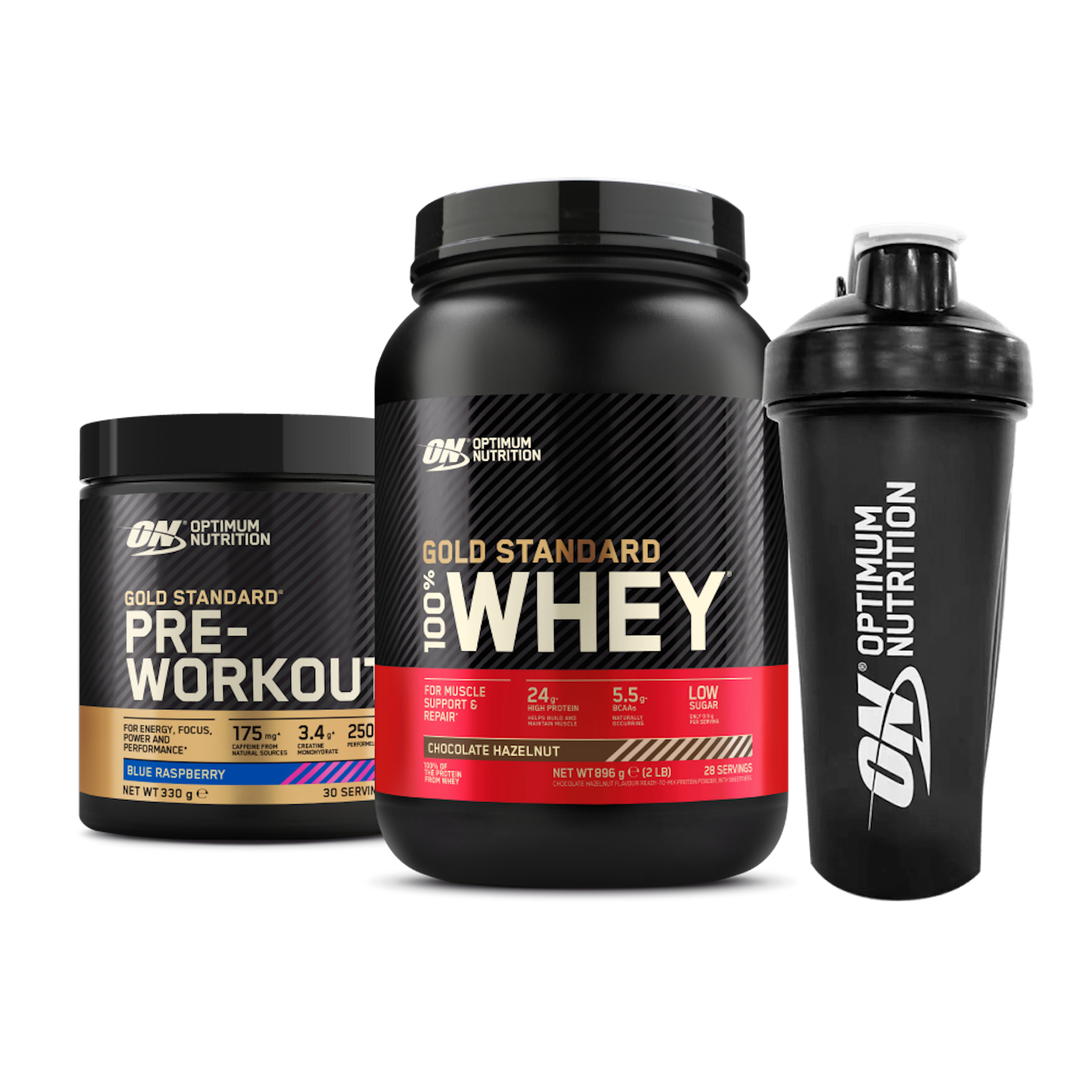No matter what kind of training split you prefer, your program is going to need a couple of solid leg days. It’s not for nothing that two of three powerlifts are lower body-focused. And without a strong lower body, Olympic lifts fall apart. Athletes are also slower and less agile. Even if you’re not training for a competition, your lower body is the foundation for nearly every daily activity and lift. You know leg day is important, but here’s how to tailor your lower body workouts to suit different training goals.
But crafting an excellent lower body workout is about more than just leg day. Sure, your legs are your literal lower body, but there are so many variations to what “leg day” can look like. Depending on your goals, the possibilities for lower body workouts are pretty much endless. Read on to learn how your lower-body muscles work, why you need to train them, and the best lower-body workouts for specific goals.
Best Lower Body Workouts
- Lower Body Workout for Strength
- Lower Body Workout for Muscle Growth
- Lower Body Workout for Power
- Bodyweight Lower Body Workout
- Lower Body Workout for Fat Loss
Note: The notation prescribed in these routines is (sets) x (reps).
Best Lower Body Workout for Strength
Regardless of your goals, the most effective work is typically going to involve compound movements. With your lower body, the bread and butter movements will be squats and deadlifts. When you’re training for strength, these lifts are even more vital, as they recruit the highest number of muscles and allow for a lot of loading.
You’ll want to go from moderately to very heavy when you’re building strength in your lower body — so choose your weights carefully. Always make sure your form is locked in; you don’t want to build the illusion of strength by racking up weights without hitting depth.
The Workout
Depending on your training age (meaning how many years you’ve been working out), perform this workout two or three times per week. If you’re doing it twice a week, alternate between back squats and deadlifts where indicated. If you’re training three times, go in the order of squat-deadlift-squat.
Make sure you’re resting in the range of two and four minutes between sets. You’ll need this time to fully recover and maximize each effort, so take the time and mentally lock-in. Use sufficiently heavy weights so that you’re training to near failure at the prescribed rep ranges.
- Back Squat or Deadlift: 3 x 5
- Dumbbell Bulgarian Split Squat: 3 x 6 per side
- Single-Leg Romanian Deadlift: 3 x 8 per side
- Dumbbell Lateral Lunge: 3 x 8 per side
Best Lower Body Workout for Muscle Growth
“Even if you’re trying to build muscle in your upper body, lower body hypertrophy should be a top priority. When you build your leg muscles, you’re promoting overall growth across your body. You’ll also be creating a strong foundation with which to handle your heavy upper body lifts”. If the aim is muscle growth, you’ll traditionally want to use moderately heavyweights. Make sure your form is flawless, especially when you’re hitting the upper rep range.
The Workout
You don’t need to go ham on isolating your hamstrings when you’re trying to build leg muscles. Compound movements are still your best bet — they target more muscle groups and activate your muscles under heavier weight. Perform this workout two or three times per week.
Once again, alternate the squat and deadlift where indicated, with squats happening twice a week if desired. Make sure your recovery is spot on — that means eating and sleeping for muscle growth.
- Back Squat or Deadlift: 4 x 10
- Power Clean: 4 x 8
- Front Rack Bulgarian Split Squat: 4 x 8 per side
- Single-Leg Dumbbell Romanian Deadlift: 4 x 8 per side
- Dumbbell Lateral Lunge: 4 x 10 per side
Best Lower Body Workout for Power
You can be tremendously strong — or have huge muscles — and not be very powerful. Power refers to how quickly a given weight is being moved. Think about it this way: are you more powerful if you’re grinding a 315 lift slowly, or if it moves quickly and easily? “Training to increase your power will cross over into making you stronger and building more muscles. You’ll also run faster, jump higher, and move more functionally in general”.
The Workout
Since you’ll be lifting fairly heavy with an emphasis on speed, you won’t perform as many reps as you might be used to with the lifting component. You’ll still want to take relatively long rests — think two to four minutes between sets. You might tend to get a bit breathless, especially if performing cardio and/or explosive movements isn’t part of your typical training regimen. Focus on taking slow, deep breaths if you can — it’ll feel tough at first, but you’ll recover faster.
- Squat Clean: 5 x 3
- Box Jump: 4 x 10-15
- Lateral Bounds: 4 x 10-15 per side
- Jumping Lunge: 4 x 15 per side
Best Bodyweight Lower Body Workout
You don’t need heavyweights to have a tough leg day. You can build lower body muscle and strength with no weights at all — you’ll need to be a little creative. To get a solid bodyweight lower body workout, you want to go as close to failure as you can with most moves. That way, you’re stimulating your body as much as possible, sans equipment.
The Workout
This one is accessible with no equipment (except a chair or couch for the rear foot elevated split squats). It’s also great for a combination of goals. “It’ll help you build strength with the sheer volume and intensity you’ll be working with. You’ll also stimulate muscle growth with the explosivity of the moves”. Where indicated, choose a set length of 30, 45, or 60 seconds based on your experience and comfort level. Perform as many reps as possible (AMRAP) during your selected time and rest double that time in between.
- Squat Hold: 4 x 30-60 second hold
- Squat Jump: 4 x 30-60 second AMRAP
- 1.5 Rear Foot-Elevated Bulgarian Split Squat: 4 x 15 per side
- Lateral Lunge: 4 x 15 per side
- Marching Glute Bridge: 4 x 15 per side
- Lateral Bound: 4 x 30-60 second AMRAP
*Sink all the way down, come up just halfway, and then sink back down and come all the way up. That’s one full rep.
Best Lower Body Workout for Fat Loss
When your goal is to change your body composition, one of the best places to start is lifting weights. “A particular focus on strengthening your lower body ensures that your body’s biggest muscle groups are involved in your efforts”. This will help maximize muscle gain and energy expenditure — making it easier to lose body fat.
The Workout
You’ll see in this workout a mixture of strength, power, and bodyweight training. This diversity allows an athlete to build the kind of strength and musculature that’s helpful for altering body composition. Adding bodyweight moves to the mix will supplement those strength and muscle gains while also providing fat burning and cardio-esque benefits of their own.
- Deadlift: 4 x 12
- Squat Clean: 4 x 5
- 1.5 Rear Foot-Elevated Bulgarian Split Squat: 4 x 15 per side
- Jumping Lunge: 4 x 15 per side
- Lateral Bound: 4 x 15 per side
Muscles in Your Lower Body
Knowing a little bit about your lower body muscles is going to help figure out a training balance. Each of the body parts listed below are groups of muscles, each consisting of multiple muscles with various functions and training needs. Overall, though, categorizing your lower body into groups can help you visualize and balance your programming.
Glutes
Hamstrings
They might not be the first things on your mind when you think of lower body muscle mass. But strengthening your hamstrings is key to controlling the descent of your squat, deadlifts, and any jumps you’re going to make.
Quads
If you’re interested in having a muscular lower body, targeting your quads is key. Whether you’re looking to cultivate that teardrop look or you boost your squat one-rep max, forging strong quads will get you there.
Calves
Training your calves happens naturally with jumping and bounding movements, and that’s a great thing. Cultivating strong calves isn’t just going to make you look great from behind. “It’s also going to help prevent injuries, stabilize your ankles during big lifts, and improve your explosivity and power”.
Benefits of Lower Body Workouts
Arguably, your lower body should be a central focus of your entire training plan. It’s the most taxing to recover from these sessions precisely because you use so much of your body as support. And because lower body training actually involves your whole body, it comes with a whole body’s worth of benefits.
Full-Body Strength Building
The compound lower-body moves really require your entire body. Your lats need to be engaged for heavy deadlifts. Your traps need to be locked and loaded to stabilize a strong squat — especially a low bar squat — and your core needs to be braced and ready for anything. So while training your lower body is often “leg day,” it’s really about so much more than just your legs.
Increase Overall Power
Even if you’re not opting to train specifically for power, strengthening the lower body will still make you more powerful. “You’ll be increasing your body’s capacity to hold up under heavy loads”. You’ll also be training your brain and nervous system to believe that you can, in fact, move absurdly heavyweights. Doing so will make weights that used to seem impossible to lift now seem lighter — and therefore, you can lift them more efficient and faster.
Enhance Everyday Mobility
When your lower body is stronger, your overall quality of life can improve. It’ll be a lot easier to take long walks with your dog or your family when your legs are accustomed to hauling a lot of weight around. Live in a walk-up apartment? “Training your lower body will make those daily stairs a lot less intimidating”. And walking half a mile home from the grocery store with an extra 20 pounds in each hand will be easier. Whatever you get up to in your day-to-day life, keeping your glutes and legs strong can help keep you mobile.
Burn More Calories
By committing to lower body training, you’re going to majorly increase your overall muscle mass. “This will increase the number of calories you burn day-to-day since maintaining muscle is energetically expensive”. Specific to your training, lower body movements have been shown to burn more calories overall than upper body movements. Just make sure you’re eating enough — and sleeping enough — to account for the added burn. (1)
How to Program Lower Body Workouts
Since they are so energetically demanding, you’ll likely want to flesh your schedule out around your lower body sessions. In other words, if you know you want to squat twice a week and deadlift once a week, assess your recovery needs and add in your upper body movements accordingly. Many lifters will opt to bench press on the days they squat and overhead press on the days they deadlift. But, there are plenty of excellent workouts splits for strength training to choose from.
Whatever split you choose, prioritize recovery first and foremost. Under normal circumstances, you don’t want to be squatting heavy and then deadlifting heavy the very next day. “As you begin to train, pay attention to how your body responds to training. Some people experience a lot more fatigue after heavy squat days”; others get more wiped out by intense deadlifting sessions. Consider using a training journal to keep note of not only what you’ve lifted but how you feel. Once you know a bit more about how your body recovers, you can program your lower body training more specifically. For example, you might not be able to tolerate heavy deadlifting 48 hours after heavy squatting — so consider doing a lighter volume squat day before deadlifting instead.
How to Warm-Up Your Lower Body
As with any workout, you’ll always want to warm up thoroughly before you dive into your session. But just because you’re focusing on your lower body doesn’t mean your warmup shouldn’t include anything above your waist. The sample lower body warmup below includes activation exercises for your shoulders and upper back — don’t neglect these. “You’ll need your traps, lats, and rear delts ready for action with lower body workouts, especially when you’re lifting weights”. You’ll reduce the risk of injury and improve your lifting efficiency by warming up, so make sure to perform each move with intention.
Lower Body Warm-Up
- 90/90 flow: 3 x 45 seconds
- Deep squat shifts with a kettlebell: 3 x 45 seconds
- Inchworm to Hip Opener: 3 x 12 per side
- Squat Sit to Reach: 3 x 10 per side
- Band Pull-Apart: 3 x 15-20
Lower body workouts are essential for your training. Whether you’re looking to build strength, gain muscle, improve your power, or change your body composition, start with your lower body. “Each type of lower body workout will have crossover into the others — trying to gain muscle will get you stronger, and improving your power will help you gain muscle”. Assess your main goals, select a lower body workout that matches those goals most closely, and get after it.
References
- Reis VM, Garrido ND, Vianna J, Sousa AC, Alves JV, Marques MC. Energy cost of isolated resistance exercises across low- to high-intensities. PLoS One. 2017;12(7):e0181311. Published 2017 Jul 24. doi:10.1371/journal.pone.0181311

For More News And Daily Updates, Follow IFBNewsfeed.Org on Facebook, Twitter, and Instagram. Comment, Like, And Share With Everyone Who May Need To Be Updated With The Most Recent Fitness/Bodybuilding/Powerlifting And CrossFit News.






